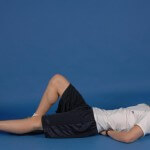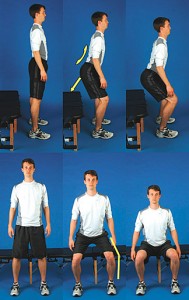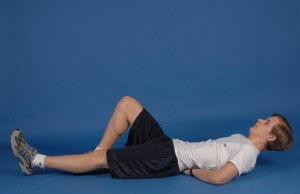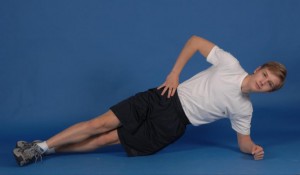All That Gleams are currently looking for car care enthusiasts to join the team and…
Treating Back Pain Caused By Car Valeting
 Like any occupation that requires constant physical work, car valets often suffer from back pain. You probably spend hours hunched over a car and have to maintain twisted positions in order to reach awkward area.
Like any occupation that requires constant physical work, car valets often suffer from back pain. You probably spend hours hunched over a car and have to maintain twisted positions in order to reach awkward area.
Consequently it is not uncommon for car valets to suffer from occasional or even chronic lower back pain (LBP).
Many studies have documented the increased risk of LBP in those that are frequently bending and twisting and this risk increases with repetitive lifting. Maintaining a bent over posture for prolonged periods predisposes to many long term back problems such as disc herniations and spinal stenosis (arthritis).
There a number of key points that should be understood when trying to prevent injury to the lower back:
- Design work and tasks that facilitate variety – perhaps the single most important guideline should be this: Don’t do too much of any one thing. Too much of any single activity leads to trouble so whilst the tasks that you may have to do on a job cannot change, the working routines and arrangement of tasks within a job can be designed to make sure that you never spend too long on any one activity.
- Allow time for the back to recover after prolonged flexion before lifting anything heavy – to prevent injury after prolonged stooping spend some time standing or walking around in order to allow the discs to “equilibrate” and the ligaments to regain stiffness before putting them under pressure from lifting.
Maintaining a reasonable level of fitness can become invaluable to helping prevent you from suffering with lower back pain. Contrary to popular belief the strength of your lower back muscles cannot predict future back pain, instead muscular endurance has been show to be the most effective way to protect your back.
Performing sit-ups will not increase help to protect your back, in fact the opposite is true. Each sit-up produces lower back compression levels close to the National Occupational Safety and Health (NIOSH) action limit. The amount of lumbar compression that results from performing sit-ups will eventually cause damage in most people, who regularly perform sit-ups.
Whilst an exercise routine should be designed specifically for you there are a few exercises that you can do to get started. In order to reduce back pain you need to work on balancing the muscles across your body, meaning it is better to stick to large full body movements instead of performing lots of isolating movements.
Assuming there are no specific problems I would recommend the following sequence of low back exercises:
- Begin with the flexion-extension cycle, also called the cat/camel motion. This is intended as a motion exercise, not a stretch, so the emphasis is place don motion rather than stretching at the end range of movement. Five or six cycles are often enough to reduce most tension. Make sure to keep the movement within a pain-free range of motion.
- Perform slow partial squats in which the pelvis is directed downward and backwards along a 45° line (as if you were to sit on a chair). The spine should be kept in a neutral position and have no motion at all.

- Curl-ups – the correct technique is critical to spare the spine. The basic starting posture is lying on your back with the hands supporting the lumbar region. Do not flatten the back to the floor, bend one knee to prevent this (make sure to alternate which knee you bend).The focus is on the thoracic spine (mid back); many tend to flex the neck which is poor technique. Rather, picture the head and neck as a rigid block – no neck movement should occur – either chin poking or chin tucking.
The intention is to activate the rectus and oblique muscles not to produce spinal movement. You should leave your elbows on the floor while elevating the head and shoulders a short distance off the floor with the flexion focused in the mid thoracic region.
To start with just take the eight off the head and shoulders with almot no motion building up to raising the head and shoulders completely off the floor.

- The side plank for the muscles of the abdominal wall to create optimal stability. If you have not performed a side bridge before start with the knees resting on the floor, eventually building up to straight legs.

- The bird dog trains the extensor muscles. The starting position is on the hands and knees with the hands under the shoulders and the knees directly under the shoulders and the knees directly under the hips. Start by simply lifting a hand or knee about an inch off the floor, slowly progression to raising one leg or arm at a time.
Eventually you should be able to raise the opposite arm and leg simultaneously. The objective is to hold the limbs parallel to the floor for about 6 to 8 seconds. Good form includes a neutral spine with no spine motion and abdominal bracing.
This exercise routine should be performed around five times a week, making sure the focus is on maintaining good form. Perform as many repetitions as you can without losing any form, as soon as you start to lose this stop straight away. Remember that the aim is to improve muscle endurance not muscle strength. If anything starts to cause pain then stop the exercise and seek professional advice – it may be that you need a more specific routine designed for you.
About The Author
This blog post was written by Sally Wade from Surrey Osteopathic Care, based in Guildford.
Sally graduated from the European School of Osteopathy in Maidstone, Kent with a BSc (Hons) Ost. She is fully insured and registered with the General Osteopathic Council as well as being a member of the British Osteopathic Association.
Sally has developed a special interest in osteopathy for pregnant women andosteopathy for children. She is also a keen runner, regularly training for competitive events. This has led to a special interest in the treatment of sports injuries and rehabilitation, helping people to get back to their sport as quickly as possible.



This Post Has 0 Comments